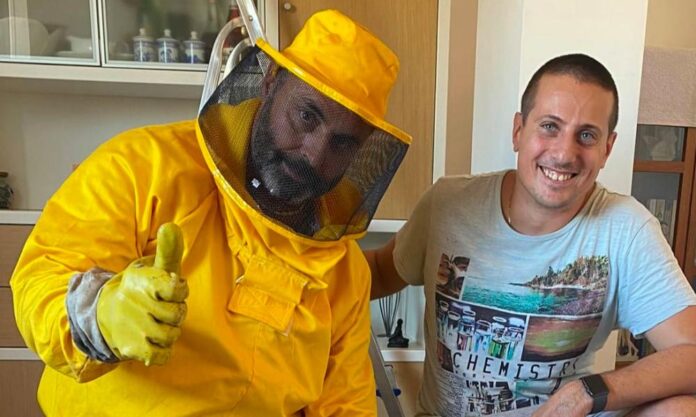A Rome zoologist says the Italian capital has become “a proper jungle” amid a surge in the presence of snakes, oriental hornets, seagulls and rats owing to a combination of high temperatures and the city’s persistent problem with rubbish.
Andrea Lunerti, who is well known in Rome for capturing dangerous animals, said he had been inundated with calls this summer, especially reports of snake sightings.
“There are many more sightings of snakes than there used to be,” Lunerti said. “The snake population grew exponentially during the winter because the temperature was so warm. They wouldn’t have survived if it had been cold. Then they come to the city from their natural environment because there is a lot of food waste, and where there is food waste there are rats – their main prey.”
Related: Rubbish crisis triples demand for rat control services in Rome
The most common type of snake found in Rome is the green whip snake, although Lunerti has captured four vipers too.
On Friday morning, he received a call from a traumatised woman after a green whip snake fell on to her terrace. He was also recently called overnight by police asking him to remove one found in the doctors’ changing room of a hospital in the Parioli district.
“You find them on terraces, in gardens, in school buildings,” he said. “There was even one hanging on the grille door of an elevator in a residential building, causing much panic. The snakes are very good at finding hiding spots in buildings, waiting for the right moment to leave and hunt their prey.”
Lunerti asks his callers to send him videos of the snakes, which allow him to decipher if they are poisonous or not. “But even the non-poisonous ones cause havoc because they send people into a panic, which makes them do dangerous things, like darting across the road without looking.”
Oriental hornets, a species of wasp that originates mostly from north Africa and south-east Asia, have also established a strong presence in Rome since 2021, when they were initially sighted in the Monteverde district before nests began to sprout in the nooks of window shutters, vents, air conditioning units and even the crevices of ancient monuments in the city centre.
Their proliferation is also a consequence of the higher temperatures and rubbish.
Lunerti said: “Rome really needs to get a grip of its waste management otherwise we will be seeing even more snakes and hornets, not to mention the rats and seagulls – there are more seagulls in Rome than there are in Fregene [a coastal town close to Rome].”
He said that at least the seagulls played the role of killing rats and snakes.
“A snake was captured by a seagull and dropped on to a terrace,” he said. “The city has become a proper jungle.”
Rome’s city council said that there was “no jungle” and that reports of snakes and other species of animals “do not indicate any alarm”.
The council also denied the link between snakes and the rubbish, citing the zoologist Enrico Alleva, who said: “Some species of rat predators are more active in this period precisely because they are hunting rats, which when the city is emptied become more enterprising due to the lack of waste available.”
The council said that data from Ama, the company that manages Rome’s waste collection, showed that the service had improved, and there was significant waste reduction so far in 2024 compared with other years. “This allows us to say that the cleanliness of the city is the best it has been for years,” it said.

